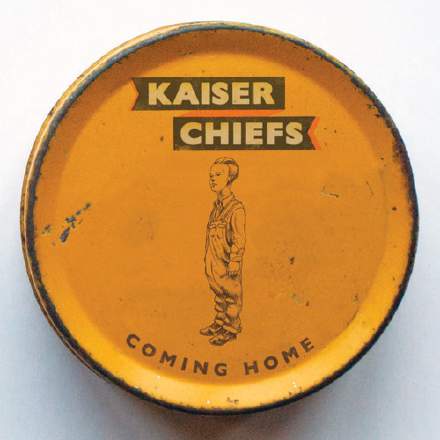
This mix features a textbook example of slapback echo on the lead vocals during the verses (0:21 and 1:35) and middle section (3:01). To my ears it sounds like a single–tap echo with a delay time of approximately 60ms. As I understand it, this mix comes from Michael Brauer, a big fan of classic tape echo units, so I wouldn’t be at all surprised if that’s what we’re hearing in this case — certainly there’s that kind of smoothness to the delay tap I’d expect of an analogue unit.
The drum sound is also tremendously compressed, but at the same time the hi–hat isn’t at all overbearing, as it normally becomes if you’re working with completely live drum recordings, no matter how busy you get gating/editing spill. As a result, I’d wager there’s at least a snare–drum sample supplementing the live tracks here, because I find it hard to believe that you could get such a compressed snare so upfront in the mix otherwise. There could also be a kick–drum sample in there too, but it’s always trickier to tell there, because it’s usually fairly straightforward to isolate the kick–drum sound of any live kit recording during mixdown by using a combination of gating on the kick channel and high–pass filtering on all the other mics — especially if an ‘inside–the–kick’ close–mic placement has been used. (It’s also interesting to note that there don’t seem to be any toms used in this track at all, and the heavy snare timbre makes sense to me within this context, because it helps retain more power in the end–of–section fills.)
Finally, here’s a little poser for you: what’s the purpose of the level hike that appears to be applied to the whole mix at 1:27? It’s a boost of around 0.7dB, I think, and while that might seem rather small, it’s nonetheless clearly audible. While the idea of riding the overall level of the mix with your master fader is by no means new or unusual (Andy Wallace mentioned it in this recent Sound On Sound magazine interview, for instance), such tactics are typically reserved for subliminally supporting section changes — the hoariest old chestnut being to boost the level a decibel or two whenever a chorus hits. But what purpose does it serve in this case, where it comes in such an odd place musically, namely the sixth eighth-note of the first bar following the chorus? I suppose you could argue that its very unusualness helps maintain the attention of the listener. But it’s probably just a goof…










